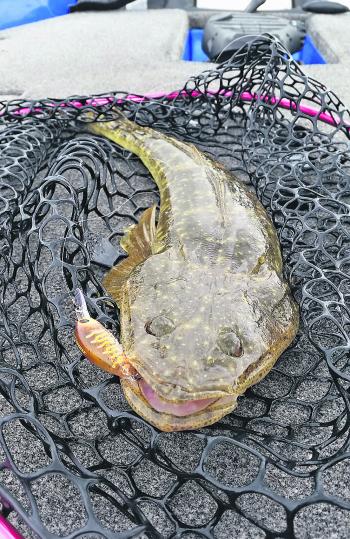Some of us are glad to see the end of the long humid summer we experienced at the start of this year, but to look back is to realise the positive influence this late summer has had on the northern bay fishery.
The consistency of southerly and southeasterly winds through the summer was quite unusual and hasn’t been experienced since 2010. That year we had an especially fruitful following winter period, and fishing was solid in all corners of the bay. I believe this was due to the winds pushing a stable supply of baitfish schools into the northern bay from down south, giving predators the pleasure of a plethora of food sources. This feeding trough combined with periods of decreased winds and cloudy weather, provided anglers with a foolproof recipe for fishing that continued through winter. Let’s cross our fingers for a repeat performance this season and great fishing over the next month. Now I’ll bring you up to date on the goings on in the northern bay.
After a quiet back end of summer, autumn has been kind to the Bribie area and whiting and flathead are the flavours of the month as the weather cooled. Sand whiting have been present around Lime Pocket and the mouth of Coochin Creek, especially on the receding tides, and many anglers using yabbies and bloodworms have experienced great success. The Pumicestone is another area that has really profited from last month’s banana prawn run in the northern bay, with many of the creeks still producing scattered prawn catches giving any able predators ample excuse to stay in the area. Flathead numbers have been great, with many of the prominent gutters like Tonys and Gallaghers producing decent 45-55cm specimens.
The Pine has been the pick of the places in the northern bay due to last month’s prawn run, which generated the best fishing activity in this area in the last six months. During the run, prawn schools accumulated outside of Nudgee Beach, Cabbage Tree Creek and Clontarf with movement dependent on wind and tides. The lower reaches of the Pine have fished well off this movement, especially for bream, flathead and whiting. Hardbody lures with transparent shrimp patterns have worked well to catch bream, especially on fuller tides when casting up among the mangroves. Places like Dohles Rocks and Bald Hills Creek have also been good breaming areas, and anglers have been rewarded while fishing mangrove edges up the southern arm. Flathead numbers have still been good under the Houghton Highway Bridge, with success coming on both bait and large minnow style soft plastics. Sand whiting have been caught around the Hays Inlet area on the run-out tide, alongside diver whiting, which have started to grow in numbers in Bramble Bay – this indicates that cooler weather is just around the corner.
The Peninsula has seen plenty of snapper activity over the last month, with good reports of models around the 70-80cm mark pulled just before the last full moon. Fresh bait has been the authority bait in the area, but anglers have also achieved good fish on plastics in the lower lit hours. The southern end of the peninsula has kept up with its northern counterpart (the North Reef) in the fishing stakes with the southern end of Scotts Point Green Zone a very popular area, especially in the early hours.
Bream numbers have been good lately with a consistency in size (27-28cm fork length), which indicates that bream are on the move for their annual spawn over the months of June and July. Less than favourable winds and rough weather are the best times to chase bream on the peninsula, granted you survive the flagellating boat ride to the outer bommies. Fish are less spooky in these conditions on account of the increased surface commotion. Hardbody lures like Daiwa Presso Cranks, Cranka Cranks, Jackall Chubbies and Berkley Fat Dogs have worked well, especially when used with a slow rolling retrieve.
Be sure to check whether the whiting you catch over the cooler months are trumpeter (winter) or sand whiting. Check the factbox to know the difference. These steps will protect you from getting in trouble with the law as winter whiting have no size limit and a bag limit of 50, whereas sand whiting have a size limit of 23cm and a bag limit of only 30. So take the time to identify your catch!
Facts
Winter (trumpeter) whiting
The anal fin has 19-20 soft rays (sand whiting have 15-16)
Their lateral line is distinctly marked and easy to see
Their scales are smaller with a more pearlescent colour, and are easy to dislodge

Quality flathead are roaming the bay.

Chloe’s smile says it all!




